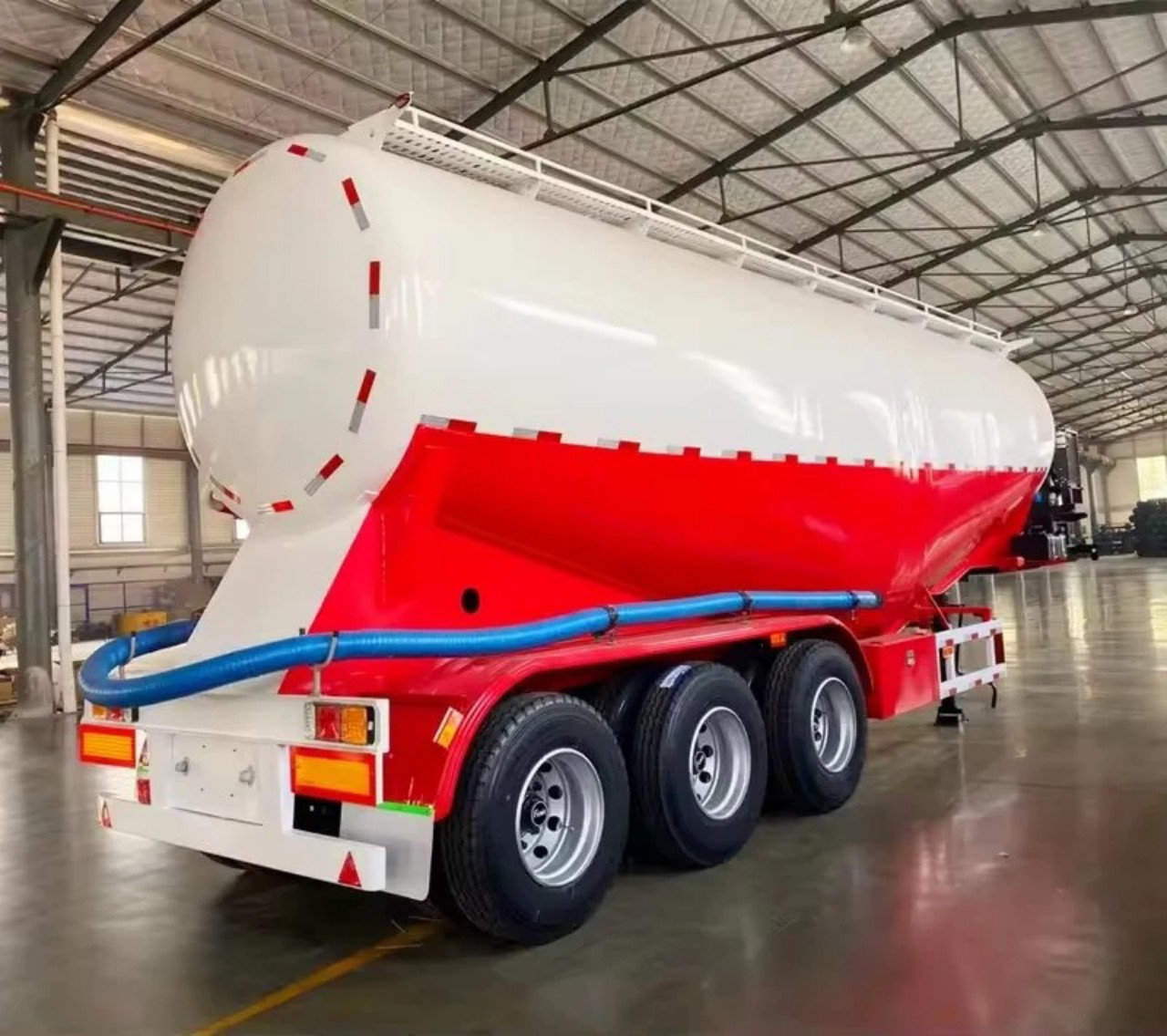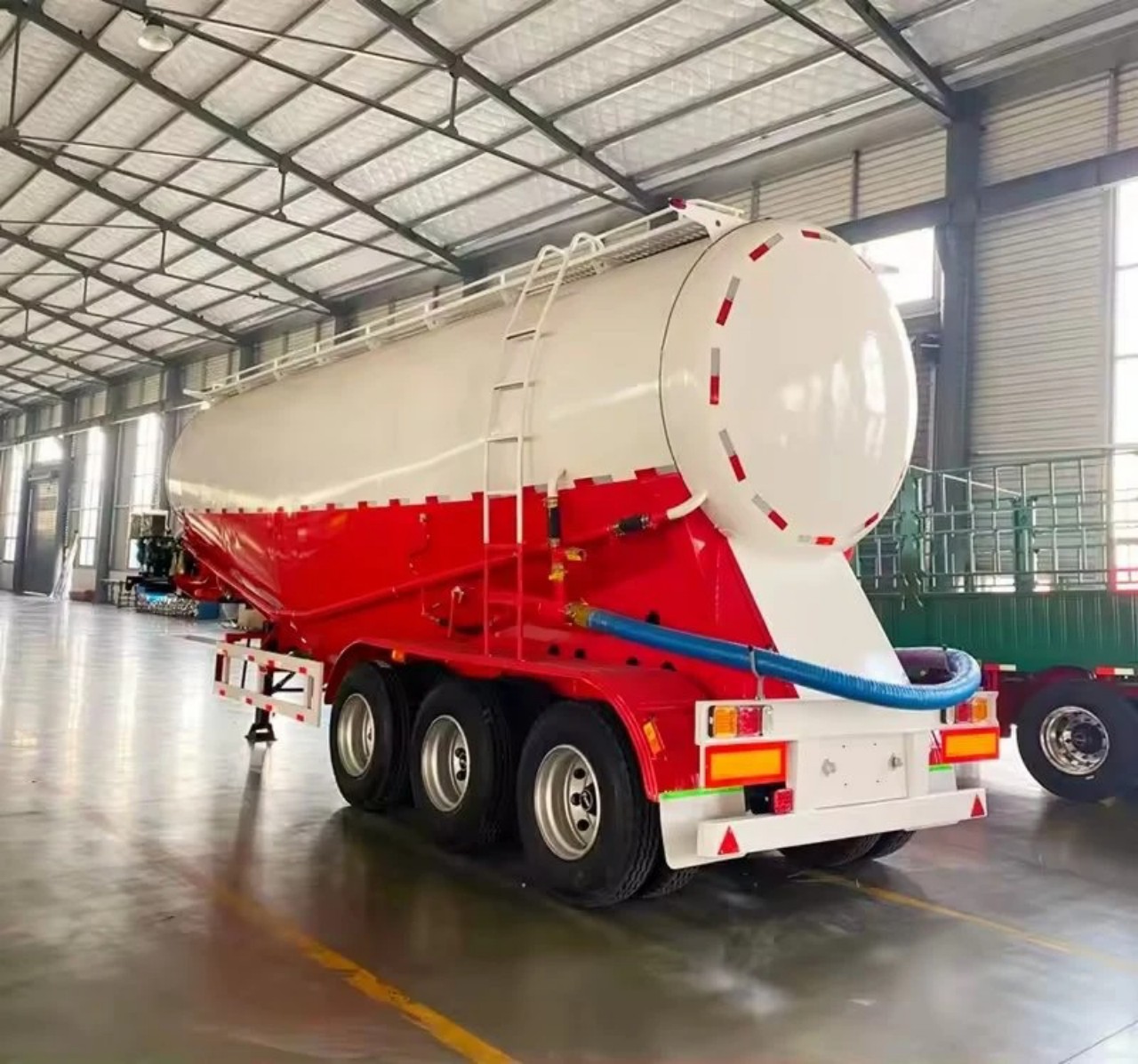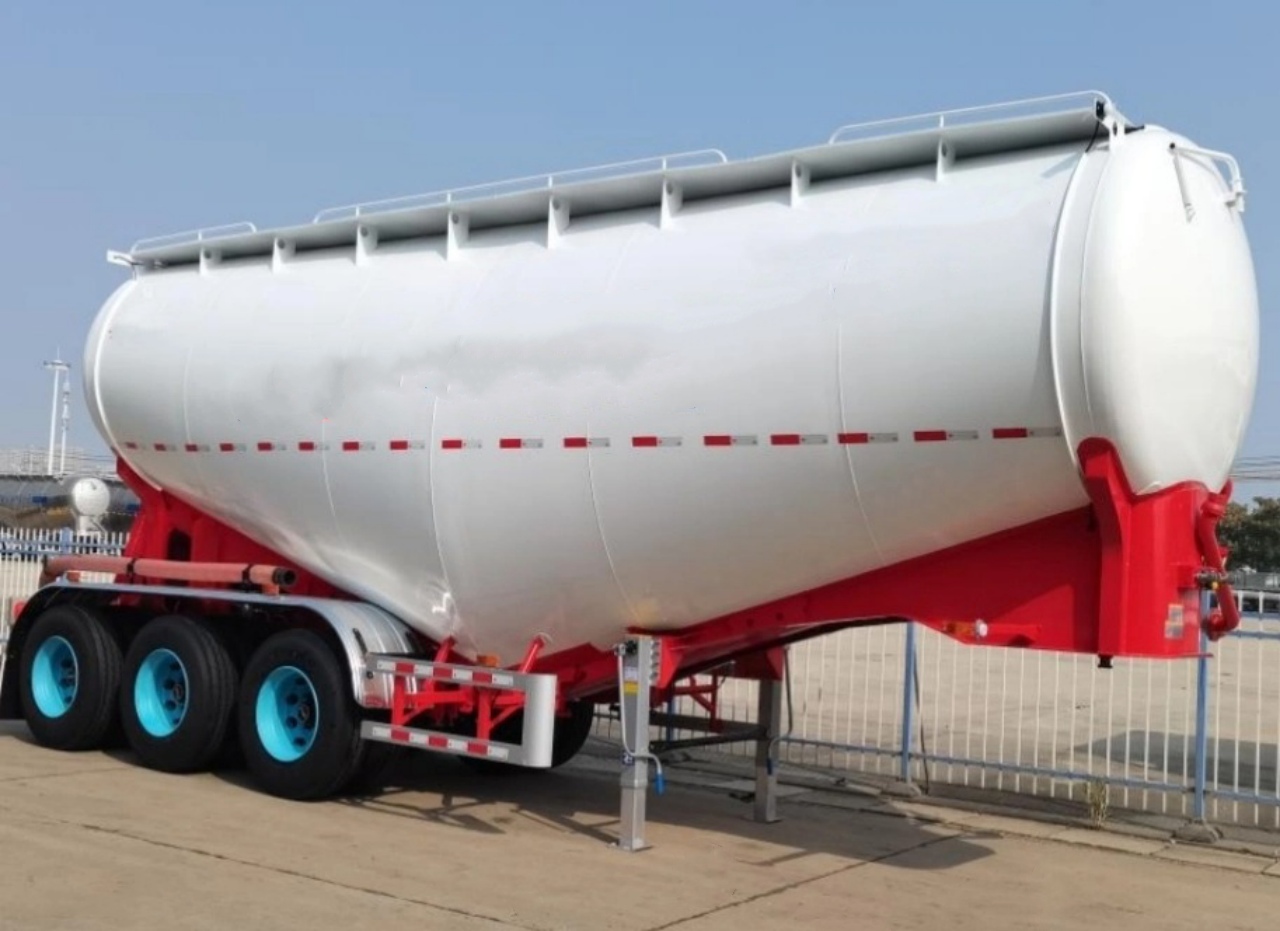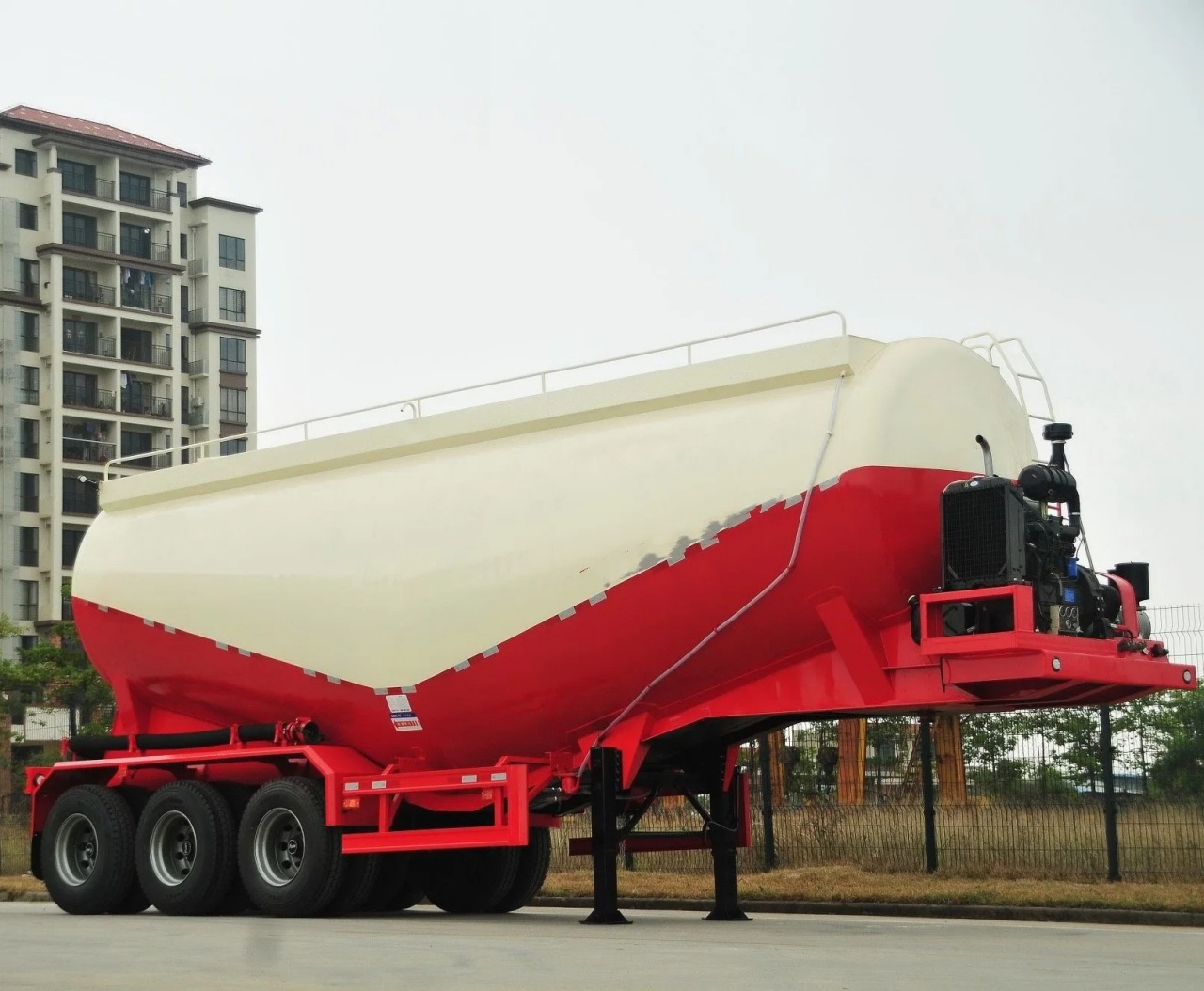A pneumatic tank trailer is a specialized type of bulk vehicle designed to carry dry bulk commodities such as cement, flour, lime, fly ash, plastic pellets, and other granular materials. These trailers use compressed air to unload their contents efficiently, making them an essential part of industries like construction, agriculture, and chemical manufacturing. This article will explore the design, components, working principles, advantages, and common applications of pneumatic tank trailers.
Design and Structure
A pneumatic tank trailer consists of several key structural components that enable the safe and efficient transportation of dry bulk materials. The main parts of the trailer include:
- Tank Body – The tank is typically cylindrical or conical in shape, constructed from aluminum or stainless steel to withstand internal pressure and resist corrosion.
- Manholes and Hatches – Located on top of the tank, these allow loading of bulk materials and provide access for inspection and cleaning.
- Discharge System – Includes piping, valves, and an air-assisted mechanism that facilitates unloading through a controlled flow of compressed air.
- Air Compressor – Provides the necessary pressure to move the material through the discharge piping system.
- Support Frame and Chassis – A sturdy framework that holds the tank and provides mounting points for axles, suspension, and wheels.
- Safety Features – Includes pressure relief valves, gauges, and emergency shut-off systems to prevent over-pressurization.

Working Principle of a Pneumatic Tank Trailer
The primary working principle of a pneumatic tank trailer is based on the use of compressed air to move bulk materials out of the tank. The process can be divided into the following steps:
- Loading – Dry bulk material is loaded into the tank through top-mounted manholes or hatches.
- Pressurization – The onboard air compressor generates compressed air, which is directed into the tank.
- Fluidization – Inside the tank, aerators or fluidizing pads help loosen the material, reducing friction and making it easier to flow.
- Discharge – The pressurized air pushes the material through the bottom discharge piping system to a storage silo, hopper, or another receiving container.
- Depressurization – Once the unloading process is complete, the tank is depressurized before the trailer can be transported again.
Types of Pneumatic Tank Trailers
Pneumatic tank trailers come in various designs to accommodate different cargo types and operational needs. The common types include:
- Vacuum Pneumatic Tank Trailer – Equipped with a vacuum pump to facilitate self-loading in addition to compressed-air unloading.
- Bottom Drop Pneumatic Tank Trailer – Designed for faster unloading by allowing materials to be discharged through bottom hoppers.
- Large Capacity Pneumatic Tank Trailer – Typically used for bulk materials requiring high-volume transport.
- Multi-Compartment Pneumatic Tank Trailer – Designed with multiple compartments to carry different materials at the same time.

Advantages of Pneumatic Tank Trailers
Pneumatic tank trailers offer numerous benefits that make them a preferred choice for transporting dry bulk materials:
- Efficiency – The air-assisted unloading system speeds up discharge, reducing downtime.
- Hygienic Transport – Since the system is sealed and uses air pressure, there is minimal exposure to external contaminants, making it ideal for food-grade products.
- Reduced Material Loss – The controlled unloading process ensures that almost all material is delivered without significant spillage.
- Versatility – Capable of transporting a wide range of dry bulk goods, from powders to granules.
- Lower Labor Costs – The automated unloading process minimizes the need for manual handling.
- Environmentally Friendly – The sealed system reduces dust emissions, which is beneficial for environmental safety.
Common Applications of Pneumatic Tank Trailers
Due to their efficiency and versatility, pneumatic tank trailers are widely used in various industries:
- Construction Industry – Transporting materials like cement, sand, and fly ash.
- Agriculture – Carrying bulk grains, animal feed, and fertilizers.
- Chemical Industry – Moving powders and granulated chemicals such as lime, soda ash, and plastic pellets.
- Food Industry – Transporting flour, sugar, starch, and other dry food ingredients hygienically.
- Mining Industry – Delivering mineral powders and other processed materials.

Maintenance and Safety Considerations
Proper maintenance and adherence to safety protocols are essential to ensure the longevity and safe operation of a pneumatic tank trailer:
- Regular Inspection – Checking for wear and tear in hoses, valves, and seals to prevent leaks.
- Cleaning Procedures – Thorough cleaning of the tank to prevent cross-contamination between different materials.
- Pressure Monitoring – Ensuring that the air compressor and pressure relief systems function correctly to avoid over-pressurization.
- Brake and Suspension Checks – Maintaining the trailer’s braking system and suspension for safe road transportation.
- Operator Training – Ensuring that drivers and operators are trained in handling pneumatic tank trailers safely and efficiently.
Conclusion
A pneumatic tank trailer is a critical component in bulk material transportation, offering efficiency, safety, and versatility. By using compressed air for unloading, these trailers simplify the delivery process for industries requiring the transport of dry bulk materials. Understanding their design, working principles, and applications helps businesses choose the right pneumatic tank trailer for their needs, ensuring optimal performance and cost-effectiveness.


